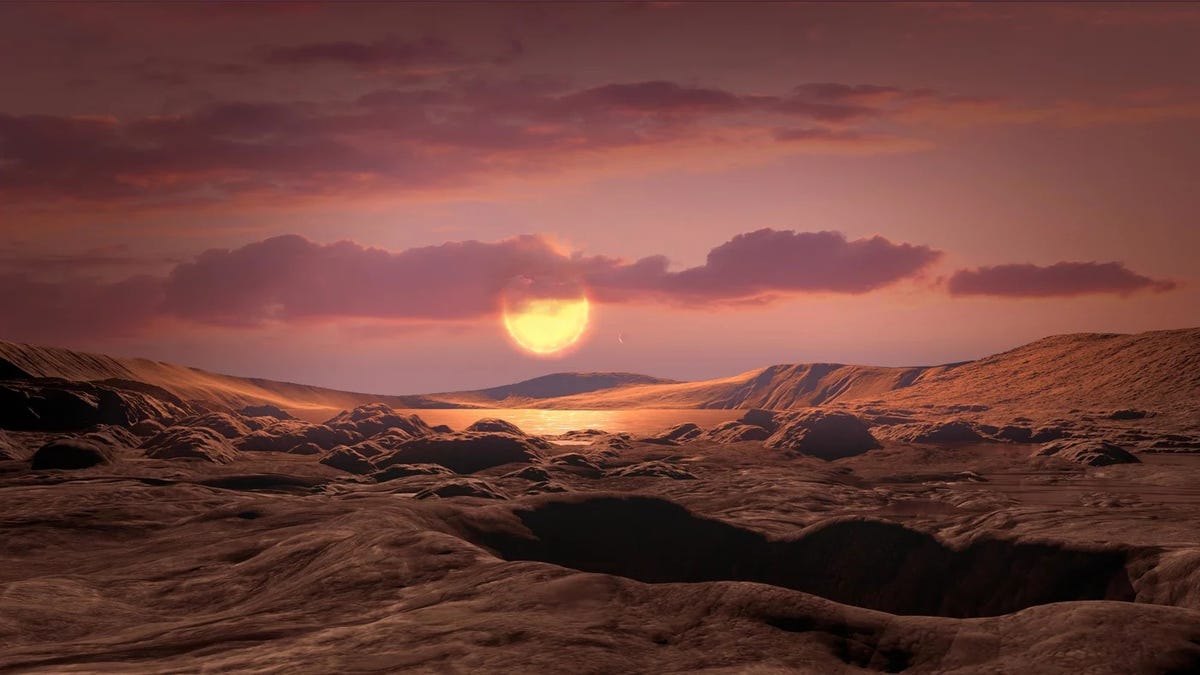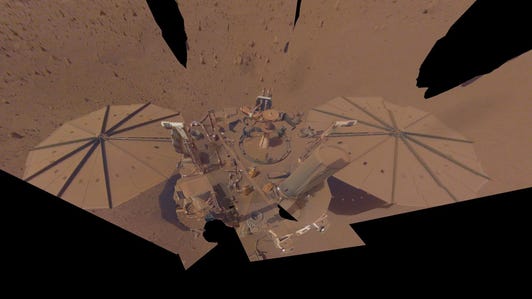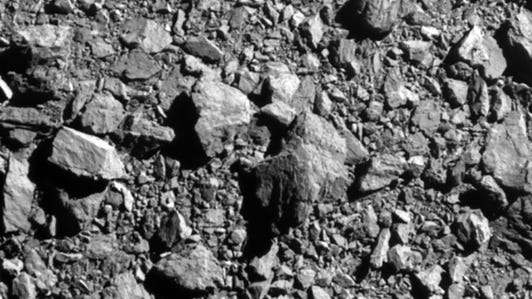
If Wolf 1069 b has retained its atmosphere, the view from its surface might look like this.
NASA/Ames Research Center/Daniel Rutter
I love a good exoplanet. Weird ones with short orbits. Big gas giants with beautiful orbital dances. But I really, really love a good exoplanet that reminds me of Earth. Say hello to Wolf 1069 b, a potentially habitable rocky world a mere (in space terms) 31 light-years away from us.
A team led by Max Planck Institute for Astronomy (MPIA) scientist Diana Kossakowski discovered the exoplanet orbiting red dwarf star Wolf 1069. Exoplanets are planets located outside our solar system. The researchers have had a study on the intriguing world accepted for publication in the journal Astronomy & Astrophysics.
The planet has a mass similar to Earth’s. According to an MPIA statement on Friday, out of over 5,000 exoplanets discovered so far, only about 1.5% have masses below two Earth masses and only about a dozen of those are in their stars’ habitable zones where liquid water could exist. More simply, Wolf 1069 b is a rarity among known exoplanets.
See also…
- See 4 Exoplanets Dance Around Their Star in Wondrous Time-Lapse Video
- NASA Planet Hunter Finds Intriguing World in Star’s Habitable Zone
It takes 15.6 days for the planet to orbit its star. Fortunately, the red dwarf is cooler and emits much less radiation than our own sun, so Wolf 1069 b doesn’t automatically get fried by its close proximity to the star. The planet is likely tidally locked, meaning that one side of the planet is always facing the star while the other side is always in night.
As MPIA notes, its takes more than liquid water to make a planet habitable. It’s possible Wolf 1069 b could have a protective atmosphere that would help make its surface welcome for liquid water and life on its perpetual dayside.
Dying Space Missions Remembered in Inspirational Final Images






+14 more
See all photos
The planet’s mass, location, rocky composition and potential for an atmosphere make it a perfect target to look for signs of life. “Because of its favorable prospects regarding habitability, it is among a small illustrious group of targets, such as Proxima Centauri b and Trappist-1 e, to search for biosignatures,” said MPIA. “Alas, such observations are currently beyond the capabilities of astronomical research.” Proxima Centauri b and Trappist-1 e are two other intriguing exoplanets with some Earth-like characteristics.
So yay, Wolf 1069 b is worthy of closer study as a place that could host life. And boo because we can’t pull off such sophisticated studies, yet. Kossakowski estimated it could take another decade before science advances enough to look for life signs on Wolf 1069 b. In the meantime, astronomers will keep seeking more exciting worlds that remind us of home.
